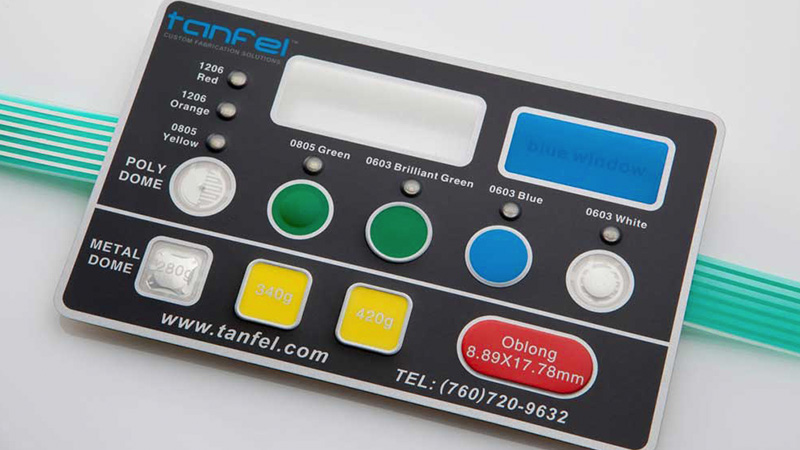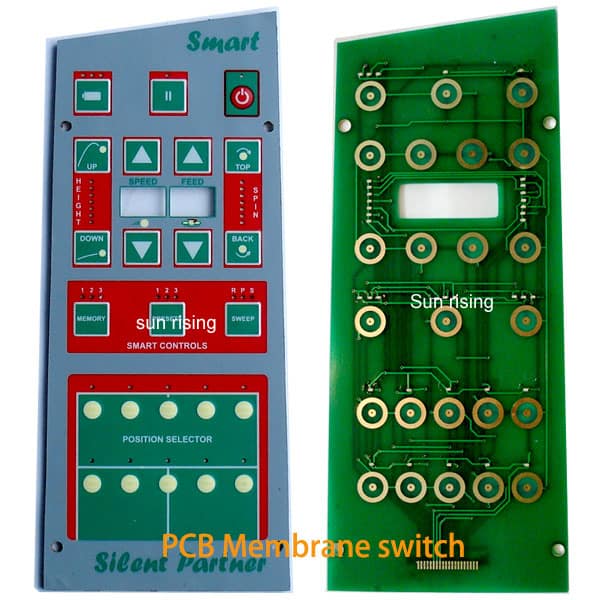The Role of Membrane Switches in Boosting Product Durability and Efficiency
The Role of Membrane Switches in Boosting Product Durability and Efficiency
Blog Article
Membrane Layer Change Innovation: The Secret to Trusted and Economical User Interfaces
Membrane layer switch modern technology has arised as a crucial component in the design of individual interfaces, providing both dependability and cost-effectiveness across a varied range of applications. As we explore the complex benefits of membrane layer switches, their possibility for advancement elevates questions concerning future applications and evolving trends.
Recognizing Membrane Change Modern Technology
Membrane layer switch modern technology is a widely used interface solution in various electronic devices, providing a seamless mix of capability and style. This innovation incorporates multiple layers of materials, typically containing a visuals overlay, spacer layer, and a circuit layer. The graphic overlay displays the interface elements, while the spacer layer divides the circuit layer from the overlay until a user activates a button.
When stress is used to the overlay, the circuit layer completes the electrical circuit, sending out a signal to the tool. This device enables various arrangements, consisting of tactile comments and backlighting choices, boosting individual communication. Membrane buttons are normally manufactured utilizing resilient products such as polyester or polycarbonate, making sure longevity and resistance to environmental aspects like wetness and dirt.
The adaptability of membrane layer switches enables their application in varied industries, consisting of medical gadgets, customer electronics, and commercial controls. Their compact layout permits assimilation into space-constrained atmospheres, offering an efficient individual interface without jeopardizing aesthetic allure. Recognizing the intricacies of membrane layer button modern technology is necessary for producers and developers seeking to develop trusted and effective human-machine interfaces.
Key Advantages of Membrane Switches
While various user interface services exist, membrane switches offer distinct benefits that make them a recommended choice in various applications. Among the key benefits is their toughness; membrane buttons are created to hold up against rough ecological conditions, including moisture, dirt, and temperature changes, making sure lasting efficiency. This durability considerably decreases the need for constant substitutes, consequently lowering total upkeep costs.

Additionally, membrane layer switches are light-weight and portable, making them ideal for applications where space is limited. Their low-profile layout contributes to a streamlined look without jeopardizing performance.
Cost-effectiveness is also a notable benefit, as the manufacturing process for membrane layer switches has a tendency to be more economical contrasted to typical mechanical switches. This affordability, incorporated with their integrity and simplicity of installation, placements membrane layer switches over as a functional option for a variety of sectors seeking effective and efficient user interfaces.
Applications Throughout Various Industries
Just how do membrane buttons adjust to the diverse demands of different industries? Membrane layer switch modern technology is progressively recognized for its convenience, making it suitable for a wide variety of applications across numerous industries. In the clinical field, membrane layer switches are used in analysis tools and individual tracking devices, where their longevity and simplicity of cleansing are vital for keeping health standards. The automotive market employs these switches in control panels and control panels, supplying a streamlined visual while ensuring easy to use procedure.
In customer electronic devices, membrane layer switches offer a small solution for remote controls and home appliances, boosting customer experience via intuitive design. Furthermore, the commercial industry leverages membrane switches for machinery control board, taking advantage of their resistance to extreme atmospheres, such as wetness and dust.
Military and aerospace applications likewise use membrane layer buttons for their integrity and ability to stand up to extreme conditions, making sure functional effectiveness in essential scenarios. Furthermore, the food look here and beverage sector takes on these buttons for automated systems, where hygiene and convenience of procedure are vital. Inevitably, membrane layer buttons are tailored to fulfill the one-of-a-kind needs of each sector, verifying their crucial function in modern-day technology interfaces
Layout and Personalization Options

In the realm of membrane layer switch modern technology, layout and modification choices play a critical role in boosting functionality and user interaction. These switches can be tailored to meet details functional requirements and visual choices, making them versatile parts in different applications.
Among the key personalization alternatives is the design of the switch itself, which can be designed to accommodate distinct user interfaces and ergonomic considerations. By readjusting the shape, dimension, and setup of switches, producers can develop instinctive layouts that help with simplicity of use. In addition, the incorporation of various shades and visuals overlays enables for branding and improved visibility, guaranteeing that users can promptly recognize functions.
Furthermore, membrane layer switches can be crafted with various tactile feedback mechanisms, such as raised switches or distinct clicks, to improve the customer experience. Different materials can likewise be selected for toughness and environmental resistance, addressing elements such as dampness, temperature variations, and chemical exposure.
Eventually, the considerable design and personalization alternatives available in membrane button modern technology empower services to develop tailored services that not only meet practical demands but additionally line up with their branding and functional demands.

Future Patterns in Membrane Layer Switches
As membrane switch modern technology continues to progress, future fads are significantly focused on improving individual experience and incorporating advanced functionalities. One significant trend is the assimilation of touch-sensitive and capacitive technologies right into typical membrane layer switches. This advancement allows for more user-friendly customer interfaces, supplying responsive responses while maintaining a sleek design.
Another emerging trend is making use of eco-friendly products, driven by the expanding need for lasting manufacturing practices. Suppliers are looking for to lower their carbon impact by using recyclable substrates and low-impact inks, lining up with worldwide sustainability goals.
Furthermore, the increase of the Web of Things (IoT) is Read More Here prompting the incorporation of smart features into membrane layer buttons. Boosted connection choices will enable devices to connect with each various other, permitting smooth assimilation right into wider systems.
Furthermore, developments in printing technologies, such as digital printing, are enabling greater style flexibility and customization. This enables suppliers to generate complex designs and dynamic colors cost-effectively.

Verdict
In conclusion, membrane layer switch modern technology represents a vital advancement in user interface style, offering considerable benefits in sturdiness, customization, and cost-effectiveness. As improvements continue to arise, specifically in touch-sensitive interfaces and sustainable materials, the possibility for membrane layer switches over great post to read to boost user experience and capability remains appealing.
Report this page